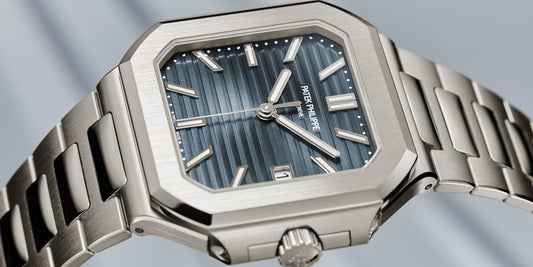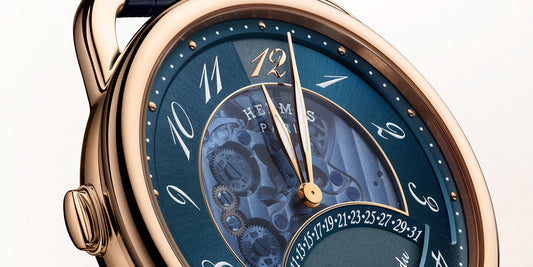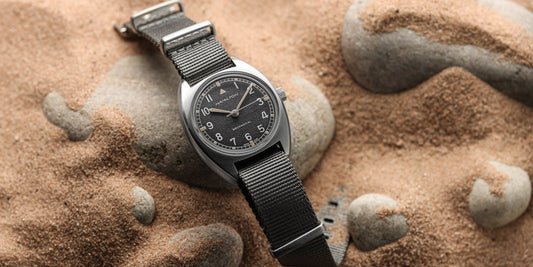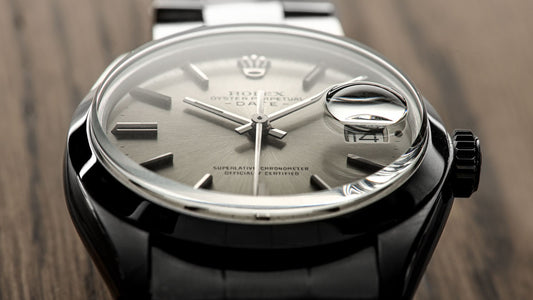The Zenith Chronomaster Sport Review: Don't judge a book by its cover...
Zenith recently released the latest evolution of their chronograph line, and it's fair to say it caused quite the stir. People had opinions mainly about its appearance, as it was quickly compared to a certain popular chronograph leading to debate across the internet.

The Zenith Chronomaster Sport - Image Credit: WatchGecko Online Magazine
Were these comparison comments correct? Is this watch nothing more than its visual similarity to competitors? Or, is there more than meets the eye?
History of the El Primero with evolution over time
Often overlooked and disregarded, Zenith is hugely underrated when you consider just how much they have contributed to the industry. The El Primero is quite simply regarded as one of the most important movements in horology history.

The Zenith El Primero A386 - Image Credit: ACollectedMan
Initially released in 1969 with the A386, it is known to be one of the first automatic chronograph movements on the market, and taking a look at the stats of it when it was introduced it was clearly the best one. Its use in the Daytona helped get Rolex out of a tricky situation back in the 1980s as they were keen to modernise the model with an automatic movement.
Charles Vermot famously ignored head office advice in the 70s to destroy all El Primero movements and tools, instead deciding to store everything in an attic. As such he saved the movement, in turn playing a hugely important part in the continued success of Zenith and in turn, the Rolex Daytona.

The Zenith DeLuca - Image Credit: Dave Sweeting
In the 80s and 90s, Zenith went on to become big-time movement makers thanks Mr Vermot and although they were pleased that a watch with their movement was becoming so popular, Zenith wanted a little more of the limelight that Rolex was receiving. And so in 1988 the Zenith DeLuca was born, introducing a design that shares a lot of its DNA with this new Chronomaster Sport.
Why It's Not The Rolex Daytona
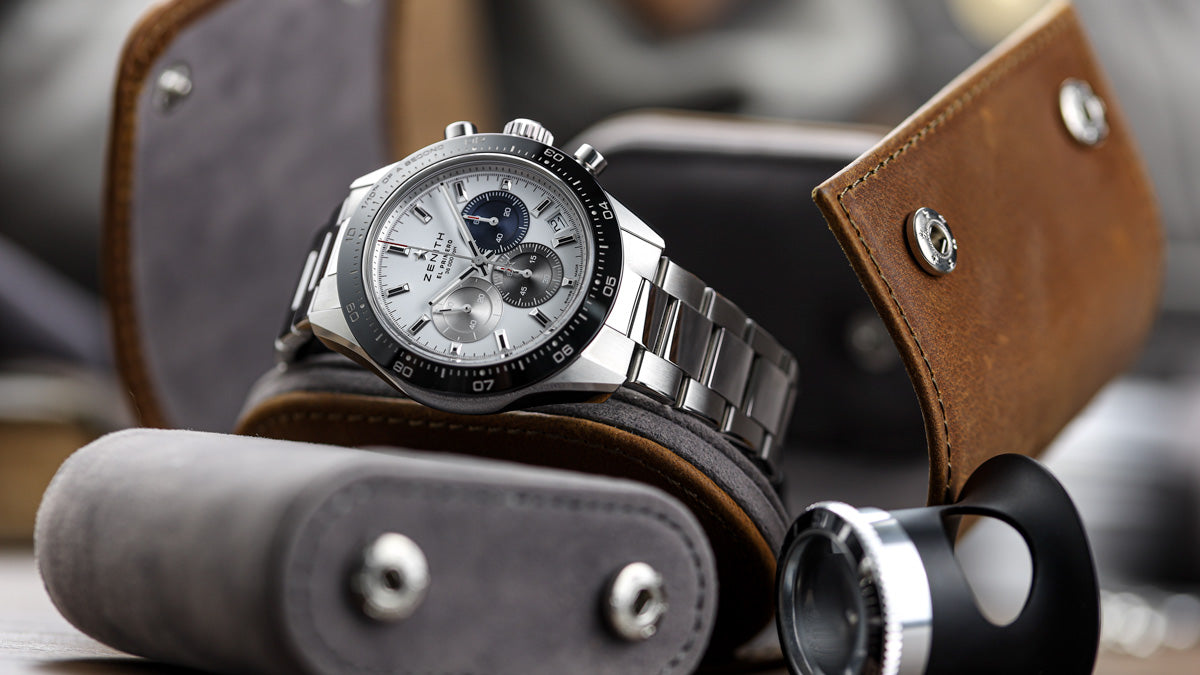
The Zenith Chronomaster Sport - Image Credit: WatchGecko Online Magazine
Let’s just address the elephant in the room right away. A few people (in fact, a lot of people) were talking about how this new Chronomaster Sport from Zenith shares a resemblance to the model it is quite familiar with, the Rolex Daytona.
With its white dial, black ceramic bezel, metal bracelet and similar hands and indices, on the surface, this may look like fair assumption to make. After all, Rolex created this aesthetic and owns it completely, right? Well not quite.
See, a lot of these ‘Daytona’ comments occur because of the watch' appearance. Sure how a watch looks is a huge part of its value (after all we look at these things quite a lot during the day) but there is more to it than that. Rolex isn’t the only brand to release a white dialled chronograph with a black bezel (shock, I know). There are of course many others, but what Rolex are is in demand. They have popularised the modern luxury steel chronograph as we know it in such a way that results in anything even remotely similar-looking being disregarded as just another lookalike.
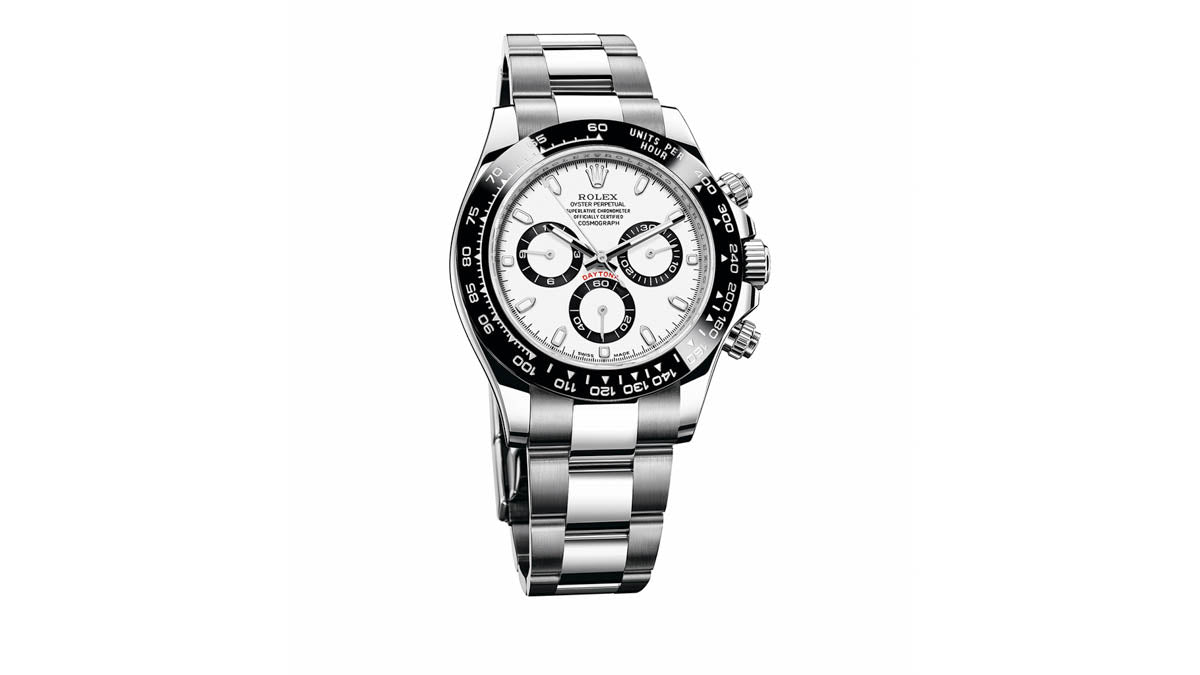
The Rolex Daytona - Image Credit: Rolex
Purchasing a Daytona for £10,500 with your name on the paperwork isn’t exactly easy. Your best bet of owning one is to fork out at least double that and pick one up on the grey market. When something is desirable and in demand, that then becomes number 1. There is a noticeable amount of details on the Zenith that are different to the Daytona, but it seems people are caught up on the visuals.
So then, let's take a look and see just how many other brands offer a stainless steel chronograph with a black bezel on a bracelet:
The Bell and Ross BR-V2-94 Steel Heritage

The Bell and Ross BR-V2-94 Steel Heritage - Image Credit: Bell and Ross
The Tag Heuer Carrera Sport Chronograph

The Tag Heuer Carrera Sport Chronograph - Image Credit: Tag Heuer
The Mont Blanc Timewalker Chronograph

The Mont Blanc Timewalker (available on a metal bracelet) - Image Credit: Monochrome Watches
The Omega Speedmaster Racing
The Breitling Superocean Heritage

The Breitling Superocean Heritage - Image Credit: Breitling
This is just a snapshot of what is out there. The point here isn’t to shame any of these brands at all, it's more to explain that watches deserve to be explored in more detail, not just disregarded for their appearance.
Zenith has an incredible history-making chronographs. The El Primero story itself is one of the most important and this new development from the brand deserves to be spoken about more than just its visual similarities to other watches.
Phew, it felt good to get that point out of the way. Right, let's get into it...
The Zenith Chronomaster Sport - What It Does
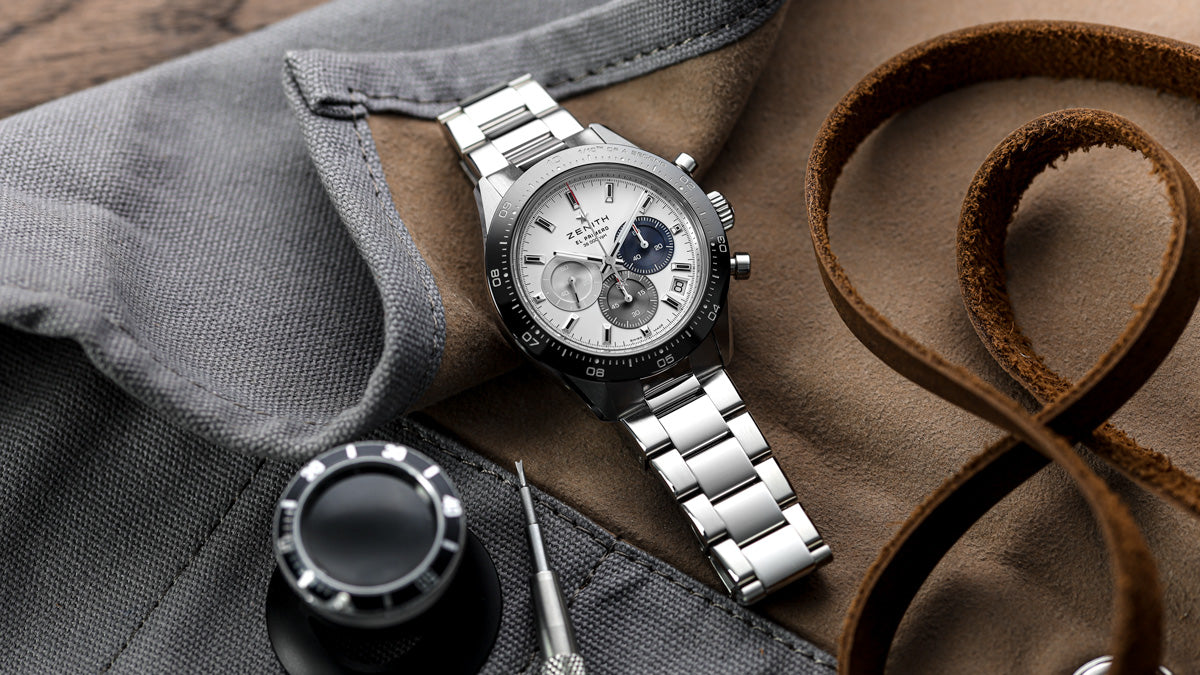
The Zenith Chronomaster Sport - Image Credit: WatchGecko Online Magazine
The Chronomaster Sport we have with us today brings all of the brand's best bits from the past into one thoroughly modern model. Dimensions on the Chronomaster Sport are spot on with a case diameter of 41mm, a case thickness of 13.6mm and a lug to lug distance of just 46.8mm. The majority of this watch’ aesthetic can be attributed to the De Luca and the brands desire to modernise such design. To fully understand this new watch we must then take a look back at the DeLuca and see what features defined the model:
- A stainless steel case
- A matching steel bracelet with polished centre links
- Chronograph function
- Pump pushers
- A black aluminium bezel
- Date window at 4:30
You’ll notice that the new Chronomaster Sport from Zenith has exactly the same features as the DeLuca, simply updated to ensure the watch is in line with modern expectations.

The Zenith Chronomaster Sport - Image Credit: WatchGecko Online Magazine
Time to jump into the dial now and fear not as there is no slowing down on historical references. The first and most obvious nod is via the subdials as the A386’s soul has been brought through thanks to the matching colour scheme and sizing found on the A386. A point of regular contention are date windows, and, love it or hate it Zenith has stuck with the 4:30 position. This might shock some of you as balance and symmetry are normally my cup of tea, but I actually love the 4:30 date.

The Zenith Chronomaster Sport - Image Credit: WatchGecko Online Magazine
I think it works fantastically well partially because there is enough happening on the dial for it to not stand out. It blends and moulds into the whole ethos of the dial very well thanks to Zenith’s attention to detail to ensure it is well proportioned. We always see date windows added to watches that just look out of place as if they were an afterthought. This is simply not the case with this Zenith.
There are clear hints at old models here but make no mistake about it, this is a modern watch and nothing explains this better than the movement powering this beast...
The El Primero 3600 Movement

The Zenith Chronomaster Sport - Image Credit: WatchGecko Online Magazine
Things start to get exciting when you flip the case over and we’re greeted by the new in-house El Primero automatic calibre 3600. To start with this is a 1/ 10th of a second chronograph meaning rather than the chronograph hand moving around the dial once every 60 seconds, it actually completes a full rotation in 10 seconds. This is where the bezel comes into play as you can now accurately time things right down to a 10th of a second.
If we dive into those subdials we can learn even more about the movement as on the surface of things it's not that clear what is going on. The 9 o'clock subdial keeps track of running, continuous seconds. The 6 o’clock dial displays elapsed minutes from the chronograph and finally that blue subdial is there as a 60-second chronograph meaning every time the chronograph hand completes a rotation around the dial, this subdial will have advanced by 10.
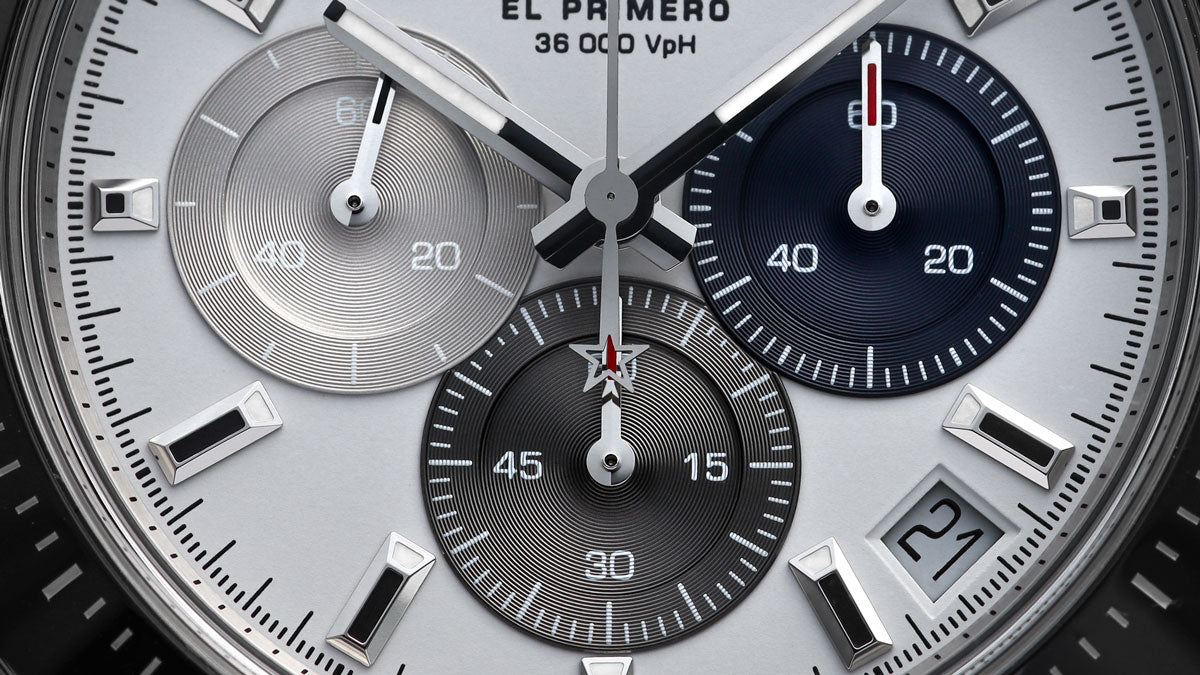
The Zenith Chronomaster Sport - Image Credit: WatchGecko Online Magazine
Essentially, that final subdial is doing the job of a conventional chronograph hand. By now you’re probably starting to realise this far from a 'normal watch'. Not only does this movement have all of this impressive watchmaking, but it also offers 60 hours of power reserve vibrating at 5 hz (36,000 vph) fitted in a case that is just 13mm thick.
How do you use the Zenith Chronomaster Sport?
Here's an example of how you read the watch. Below you can see that the chronograph has been stopped just before the '03' point on the bezel, however, if we look at the right-hand blue subdial we can see that the chronograph has been running for just over 10 seconds meaning that this reading is 12.9 seconds.

The Zenith Chronomaster Sport - Image Credit: WatchGecko Online Magazine
Interestingly though, this isn't the first time Zenith has created a watch like this. Back in 2010, they released the El Primero Striking 10th, following up just a year later with the Statos version of it which included a rotating bezel.

The Zenith Chronomaster Sport - Image Credit: WatchGecko Online Magazine
Crucially however the Stratos version measured 45.5mm in width and was limited to 1,969 pieces, whereas the Chronomaster Sport is unlimited and comes with extremely approachable proportions. It is an important part of the Chronomaster Sport’s path to creation and made way for this more modern and accessible piece.
The Zenith Chronomaster Sport on wrist
It shouldn’t come as a surprise to hear this is a stunning watch in person.
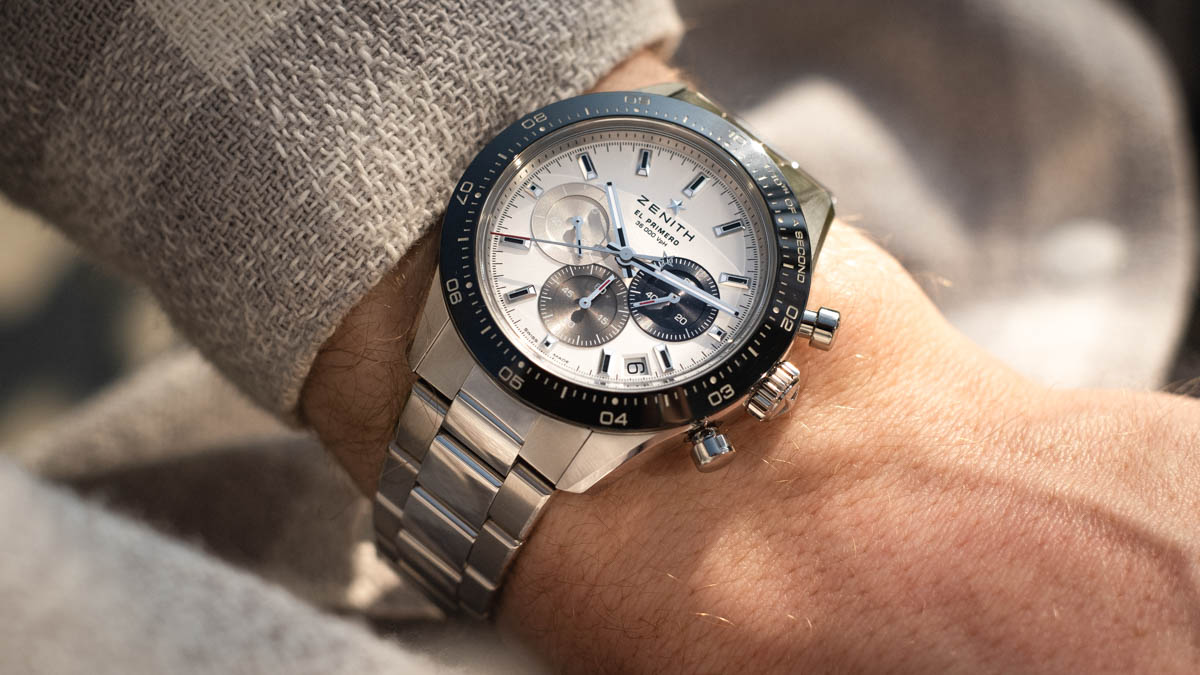
The Zenith Chronomaster Sport - Image Credit: WatchGecko Online Magazine
One of the first things that hit me was the finishing and those all-important little details. The bracelet is brushed with centre links that are polished, but the ends of the bracelet have also been polished to match. The hour markers are like torches when the light hits them, and I’m not talking about the lume. These details are complemented by addictive levels of contrast, something which is always a winning formula. It creates drama while also helping to prioritise different design elements.
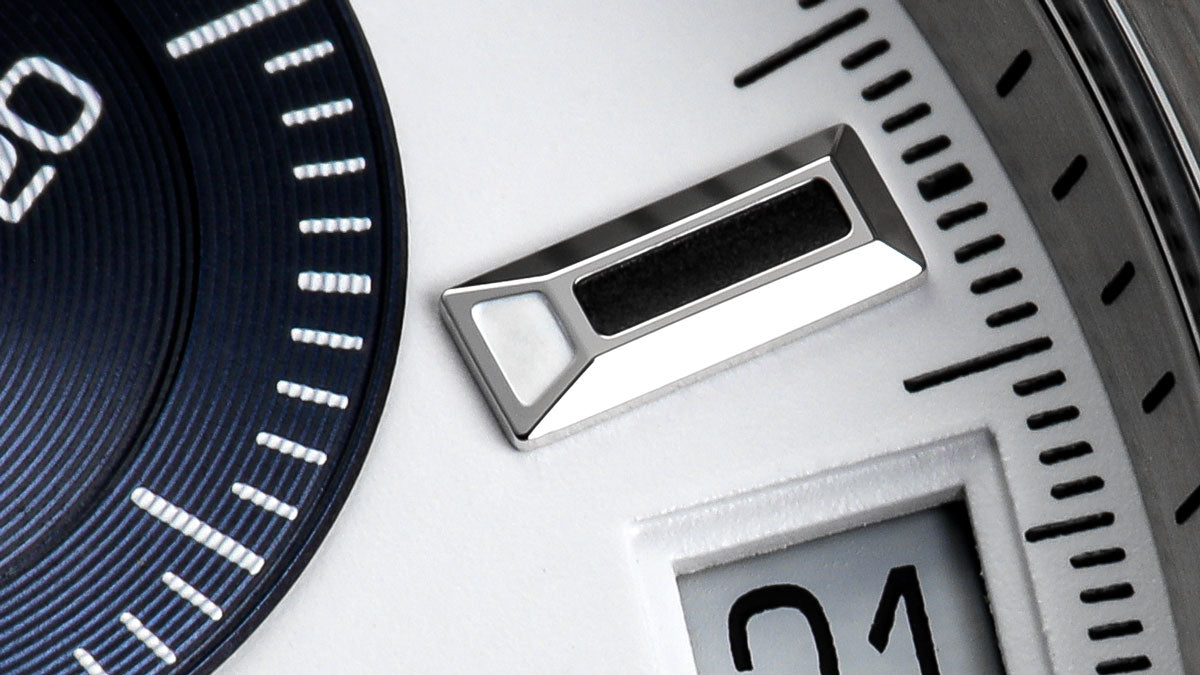
The Zenith Chronomaster Sport - Image Credit: WatchGecko Online Magazine
This is something the DeLuca was aware of back in the 80s so it is understandable Zenith knows what they’re doing here. There are actually three points of contrast here from the stark white dial, to the harsh black ceramic and then the subdials. Initially, I thought this mixture of colours would feel sloppy or poor, but after living with the watch I just love how it adds not just historical weight to the design but it also shows a relaxed side to the Chronomaster Sport.
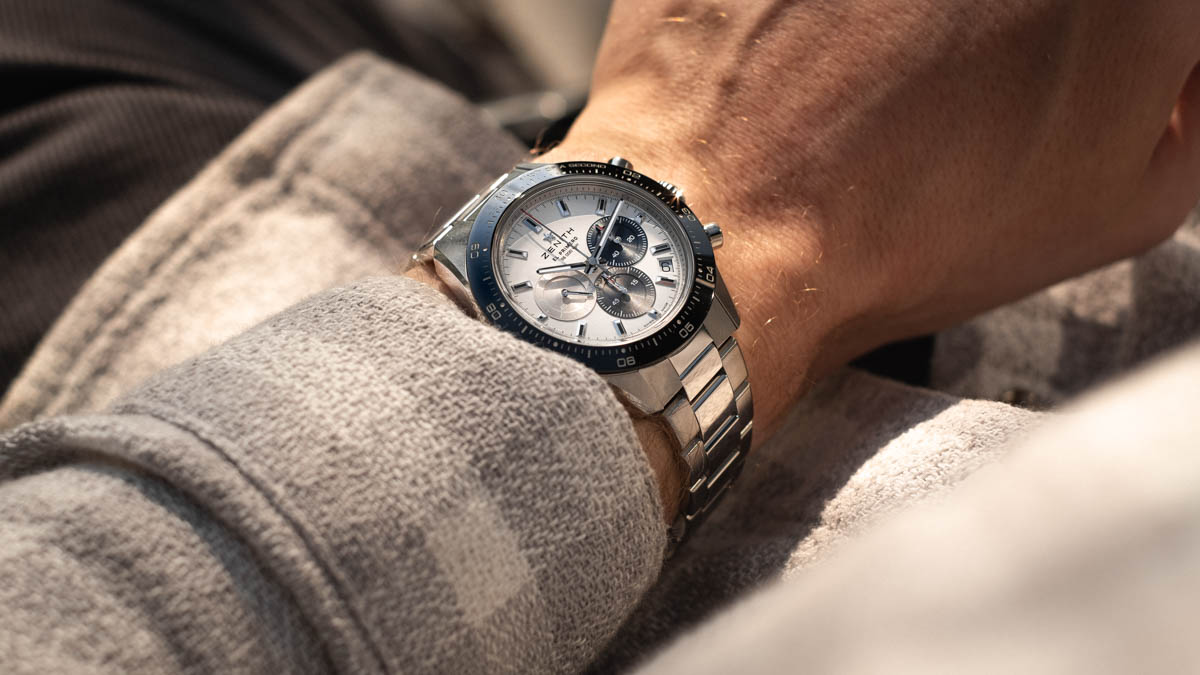
The Zenith Chronomaster Sport - Image Credit: WatchGecko Online Magazine
The movement on this watch is nothing short of a marvel. Again, this shouldn’t come as a surprise as this is Zenith and the El Primero we’re talking about here. The novelty of a 1/10th second chronograph simply doesn’t wear off and if you start to think it does, simply turn the watch over and enjoy watching it in action through the display caseback. After only a short time with the Chronomaster Sport, I know going back to a conventional 60-second chronograph is going to be tricky.
Now sure, I’m under no illusion that Zenith didn’t know what they were doing when they released this watch. Considering the DeLuca was created back in the 80s as a watch to take on the Daytona I think it's very fair to assume Zenith see the Chronomaster Sport as round two in this battle. But to my eyes, this offers something very different to the Daytona. Yes, they share visual similarities as do many many watches. If any brand is able to offer something similar to Rolex and get away with it, it's Zenith.
Final thoughts on the Zenith Chronomaster Sport

The Zenith Chronomaster Sport - Image Credit: WatchGecko Online Magazine
Over the past few years, the world of watches has really focused on the modernisation of horology. From Swatch and the Sistem51, to Oris and the Calibre 400 and now Zenith and this remarkable evolution of the iconic El Primero. It seems that ensuring mechanical watches can keep up with modern expectations is more important than ever. Thankfully, brands know this and are acting on it today.
Like it or not, Zenith has sent a strong reminder to the world that they’re true kings of the chronograph. Something makes me think this watch is going to remain a hot topic for a long time…

The Zenith Chronomaster Sport - Image Credit: WatchGecko Online Magazine
The Zenith Chronomaster Sport is now available starting from £7,900. We’d like to thank Zenith for sending this watch in on loan, if you’d like to find out more be sure to check out the watch here.
We know this is a topic that has a lot of conversation around it, so Let us know your thoughts on the Chronomaster Sport in the comments below...
Interested in reading more about Zenith? Why not check out our other Zenith content here:
The Zenith El Primero A384 Review



